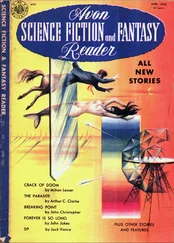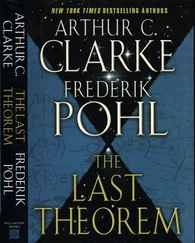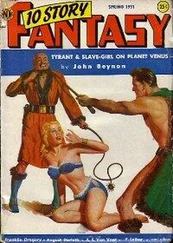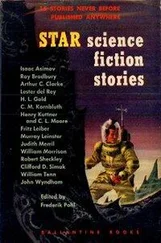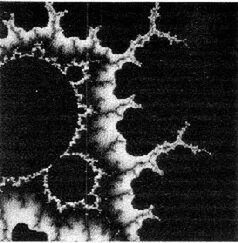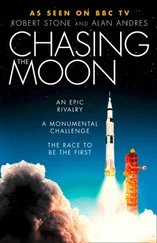Arthur Clarke - 3001 - The Final Odyssey
Здесь есть возможность читать онлайн «Arthur Clarke - 3001 - The Final Odyssey» весь текст электронной книги совершенно бесплатно (целиком полную версию без сокращений). В некоторых случаях можно слушать аудио, скачать через торрент в формате fb2 и присутствует краткое содержание. Жанр: Фантастика и фэнтези, на английском языке. Описание произведения, (предисловие) а так же отзывы посетителей доступны на портале библиотеки ЛибКат.
- Название:3001: The Final Odyssey
- Автор:
- Жанр:
- Год:неизвестен
- ISBN:нет данных
- Рейтинг книги:4 / 5. Голосов: 1
-
Избранное:Добавить в избранное
- Отзывы:
-
Ваша оценка:
- 80
- 1
- 2
- 3
- 4
- 5
3001: The Final Odyssey: краткое содержание, описание и аннотация
Предлагаем к чтению аннотацию, описание, краткое содержание или предисловие (зависит от того, что написал сам автор книги «3001: The Final Odyssey»). Если вы не нашли необходимую информацию о книге — напишите в комментариях, мы постараемся отыскать её.
3001: The Final Odyssey — читать онлайн бесплатно полную книгу (весь текст) целиком
Ниже представлен текст книги, разбитый по страницам. Система сохранения места последней прочитанной страницы, позволяет с удобством читать онлайн бесплатно книгу «3001: The Final Odyssey», без необходимости каждый раз заново искать на чём Вы остановились. Поставьте закладку, и сможете в любой момент перейти на страницу, на которой закончили чтение.
Интервал:
Закладка:
I was very flattered when the Atlantis crew produced The Fountains of Paradise during their orbital press conference, and Mission Specialist Jeffrey Hoffman sent me the autographed copy on their return to Earth.
The second tether experiment, in February 1996, was slightly more successful: the payload was indeed deployed to its full distance, but during retrieval the cable was severed, owing to an electrical discharge caused by faulty insulation. This may have been a lucky accident – perhaps the equivalent of a blown fuse:
I cannot help recalling that some of Ben Franklin's contemporaries were killed when they attempted to repeat his famous – and risky – experiment of flying a kite during a thunderstorm.
Apart from possible dangers, playing-out tethered payloads from the Shuttle appears rather like fly-fishing: is not as easy as it looks. But eventually the final 'giant leap' will be made – all the way down to the Equator.
Meanwhile, the discovery of the third form of carbon, buckminsterfullerene (C60) has made the concept of the space elevator much more plausible. In 1990 a group of chemists at Rice University, Houston, produced a tubular form of C60 – which has far greater tensile strength than diamond. The group's leader, Dr Smalley, even went so far as to claim it was the strongest material that could ever exist – and added that it would make possible the construction of the space elevator.
(Stop Press News: I am delighted to know that Dr Smalley has shared the 1996 Nobel Prize in Chemistry for this work.)
And now for a truly amazing coincidence – one so eerie that it makes me wonder Who Is In Charge.
Buckminster Fuller died in 1983, so never lived to see the discovery of the 'buckyballs' and 'buckytubes' which have given him much greater posthumous fame. During one of the last of his many world trips, I had the pleasure of flying him and his wife Anne around Sri Lanka, and showed them some of the locations featured in The Fountains of Paradise. Shortly afterwards, I made a recording from the novel on a 12" (remember them?) LP record (Caedmon TC 1606) and Bucky was kind enough to write the sleeve notes. They ended with a surprising revelation, which may well have triggered my own thinking about 'Star City':
'In 1951 I designed a free-floating tensegrity ring-bridge to be installed way out from and around the Earth's equator. Within this "halo" bridge, the Earth would continue its spinning while the circular bridge would revolve at its own rate. I foresaw Earthian traffic vertically ascending to the bridge, revolving and descending at preferred Earth loci'
I have no doubt that, if the human race decides to make such an investment (a trivial one, according to some estimates of economic growth), 'Star City' could be constructed. In addition to providing new styles of living, and giving visitors from low-gravity worlds like Mars and the Moon better access to the Home Planet, it would eliminate all rocketry from the Earth's surface and relegate it to deep space, where it belongs (Though I hope there would be occasional anniversary re-enactments at Cape Kennedy, to bring back the excitement of the pioneering days.)
Almost certainly most of the City would be empty scaffolding, and only a very small fraction would be occupied or used for scientific or technological purposes. After all, each of the Towers would be the equivalent of a ten-million-floor skyscraper – and the circumference of the ring around the geostationary orbit would be more than half the distance to the Moon! Many times the entire population of the human race could be housed in such a volume of space, if it was all enclosed. (This would pose some interesting logistics problems, which I am content to leave as 'an exercise for the student'.)
Chapter 5: Education
I was astonished to read in a newspaper on 19 July 1996 that Dr Chris Winter, head of British Telecom's Artificial Life Team, believes that the information and storage device I described in this chapter could be developed within 30 years! (In my 1956 novel The City and the Stars I put it more than a billion years in the future... obviously a serious failure of imagination.) Dr Winter states that it would allow us to 'recreate a person physically, emotionally and spiritually', and estimates that the memory requirements would be about 10 terabytes (10e13 bytes), two orders of magnitude less than the petabyte (10e15 bytes) I suggest.
And I wish I'd thought of Dr Winter's name for this device, which will certainly start some fierce debates in ecclesiastical circles: the 'Soul Catcher'... For its application to interstellar travel, see following note on Chapter 9.
For an excellent history of the 'Beanstalk' concept (as well as many other even farther-out ideas such as anti-gravity and space-warps) see Robert L. Forward's "Indistinguishable From Magic" (Baen 1995).
Chapter 7: Infinite Energy
If the inconceivable energy of the Zero Point Field (sometimes referred to as 'quantum fluctuations' or 'vacuum energy') can ever be tapped, the impact upon our civilization will be incalculable. All present sources of power – oil, coal, nuclear, hydro, solar – would become obsolete, and so would many of our fears about environmental pollution. They would all be wrapped up in one big worry – heat pollution. All energy eventually degrades to heat, and if everyone had a few million kilowatts to play with, this planet would soon be heading the way of Venus – several hundred degrees in the shade.
However, there is a bright side to the picture: there may be no other way of averting the next Ice Age, which otherwise is inevitable ('Civilization is an interval between Ice Ages' – Will Durant: "The Story of Civilization", Fine Communications, US, 1993)
Even as I write this, many competent engineers, in laboratories all over the world, claim to be tapping this new energy source. Some idea of its magnitude is contained in a famous remark by the physicist Richard Feynman, to the effect that the energy in a coffee-mug's volume (any such volume, anywhere!) is enough to boil all the oceans of the world. This, surely, is a thought to give one pause. By comparison, nuclear energy looks as feeble as a damp match.
And how many supernovae, I wonder, really are industrial accidents?
Chapter 9: Skyland
One of the main problems of getting around in Star City would be caused by the sheer distances involved: if you wanted to visit a friend in the next Tower (and communications will never completely replace contact, despite all advances in Virtual Reality) it could be the equivalent of a trip to the Moon. Even with the fastest elevators this would involve days rather than hours, or else accelerations quite unacceptable to people who had adapted to low-gravity life.
The concept of an 'inertialess drive' – i.e. a propulsion system that acts on every atom of a body so that no strains are produced when it accelerates – was probably invented by the master of the 'Space Opera', E.E. Smith, in the 1930s. It is not as improbable as it sounds – because a gravitational field acts in precisely this manner.
If you fall freely near the Earth (neglecting the effects of air resistance) you will increase speed by just under ten metres per second, every second. Yet you will feel weightless – there will be no sense of acceleration, even though your velocity is increasing by one kilometre a second, every minute and a half!
And this would still be true if you were falling in Jupiter's gravity (just over two-and-a-half times Earth's) or even the enormously more powerful field of a white dwarf or neutron star (millions or billions of times greater). You would feel nothing, even if you had approached the velocity of light from a standing start in a matter of minutes. However, if you were foolish enough to get within a few radii of the attracting object, its field would no longer be uniform over the whole length of your body, and tidal forces would soon tear you to pieces. For further details, see my deplorable but accurately-titled short story 'Neutron Tide' (in "The Wind from the Sun").
Читать дальшеИнтервал:
Закладка:
Похожие книги на «3001: The Final Odyssey»
Представляем Вашему вниманию похожие книги на «3001: The Final Odyssey» списком для выбора. Мы отобрали схожую по названию и смыслу литературу в надежде предоставить читателям больше вариантов отыскать новые, интересные, ещё непрочитанные произведения.
Обсуждение, отзывы о книге «3001: The Final Odyssey» и просто собственные мнения читателей. Оставьте ваши комментарии, напишите, что Вы думаете о произведении, его смысле или главных героях. Укажите что конкретно понравилось, а что нет, и почему Вы так считаете.


